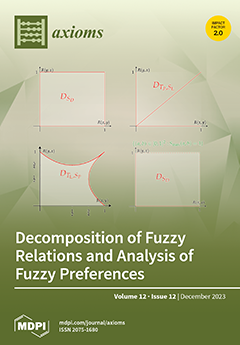In 1997, Sierpinski graphs,
, were obtained by Klavzar and Milutinovic. The graph
represents the complete graph
and
is known as the graph
[...] Read more.
In 1997, Sierpinski graphs,
, were obtained by Klavzar and Milutinovic. The graph
represents the complete graph
and
is known as the graph of the Tower of Hanoi. Through generalizing the notion of a Sierpinski graph, a graph named a generalized Sierpinski graph, denoted by
, already exists in the literature. For every graph, numerous polynomials are being studied, such as chromatic polynomials, matching polynomials, independence polynomials, and the M-polynomial. For every polynomial there is an underlying geometrical object which extracts everything that is hidden in a polynomial of a common framework. Now, we describe the steps by which we complete our task. In the first step, we generate an M-polynomial for a generalized Sierpinski graph
. In the second step, we extract some degree-based indices of a generalized Sierpinski graph
using the M-polynomial generated in step 1. In step 3, we generate the entropy of a generalized Sierpinski graph
by using the Randić index.
Full article




